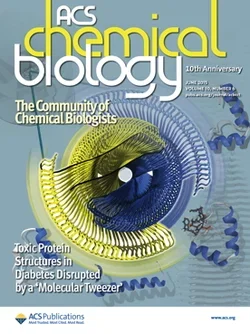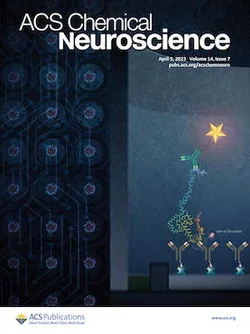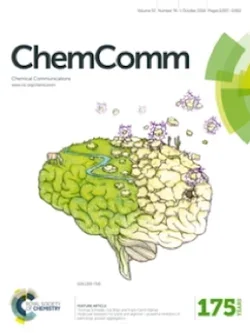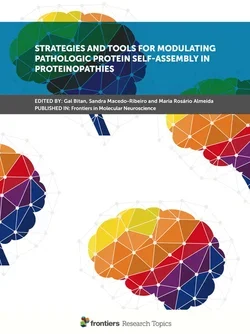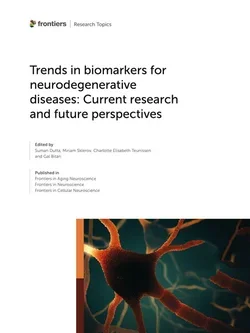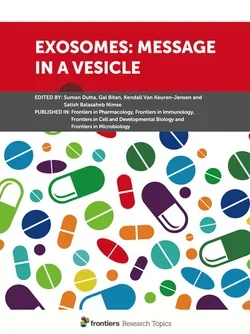Publications and editorials
- A Silva, S Duarte-Silva, PM Martins, B Rodrigues, D Serrenho, D Vilasboas-Campos, A Teixeira-Castro, J Vieyto-Nuñez, J Mieres-Perez, F Figueiredo, M Podlasiak, T van der Kellen, J Fraga, J Noble, C Lantz, N Sepanj, D Monteiro-Fernandes, S Guerreiro, A Neves-Carvalho, J Pereira-Sousa, F-G Klärner, T Schrader, JA Loo, A Pastore, E Sanchez-Garcia, G Bitan, AL Carvalho, P Maciel, and S Macedo-Ribeiro. (2025) Allosteric Inhibition of Pathological Ataxin-3 Aggregation: A Path for Development of Spinocerebellar Ataxia type-3 Therapies. Adv. Sci., e02216, DOI: 10.1002/advs.202502216 (in press).
- C Lantz, MA Zenaidee, D Tran, K Biggs, G Bitan, RR Orgozalek Loo, and JA Loo (2025) Mass spectrometry structural analysis of intrinsically disordered phosphoproteins. Int. J. Mass Spectrom., 513: 117455.
- M Giaccio, A Monaco, L Galiano, A Parente, L Borzacchiello, R Rubino, F-G Klärner, D Killa, C Perna, P Piccolo, X Pan, M Khijniak, I Siddique, T Schrader, AV Pshezhetsky, CN Sorrentino, G Bitan, and A Fraldi (2024) Anti-amyloid treatment is broadly effective and synergizes with gene therapy in neuronopathic MPS. Mol. Ther., 32: 4108-4121.
- M Hong and G Bitan (2024) Recent advances and future therapy development for Alzheimer’s disease and related disorders. Neural Regener. Res., 19: 1877-1878.
- C Lantz, J Lopez, AK Goring, MA Zenaidee, KE Biggs, JP Whitelegge, RR Ogorzalek Loo, F-G Klärner, T Schrader, G Bitan, and JA Loo (2023) Characterization of Molecular Tweezer Binding on α-Synuclein with Native Top-Down Mass Spectrometry and Ion Mobility-Mass Spectrometry Reveals a Mechanism for Aggregation Inhibition. J. Am. Soc. Mass Spectrom., 34: 2739-2747.
- HB Taha, E Chawla, and G Bitan (2023) IM-MS and ECD-MS/MS Provide Insight into Modulation of Amyloid Proteins Self-Assembly by Peptides and Small Molecules. J. Am. Soc. Mass Spectrom., 34: 2066-2086.
- S Dutta, S Hornung, HB Taha, and G Bitan (2023) Biomarkers for parkinsonian disorders in CNS-originating EVs – promise and challenges. Acta Neuropathol., 145: 515-540.
- HB Taha, S Hornung, S Dutta, L Fenwick, O Lahgui, K Howe, N Elabed, I Del Rosario, DY Wong, A Duarte Folle, D Markovic, J-A Palma, UJ Kang, RN Alcalay, M Sklerov, H Kaufmann, BL Fogel, JM Bronstein, B Ritz, and G Bitan (2023) Toward a Biomarker Panel measured in CNS-originating Extracellular Vesicles for Improved Differential Diagnosis of Parkinson’s Disease and Multiple System Atrophy. Transl. Neurodegener., 12: 14.
- S Dutta*, S Hornung*, HB Taha*, K Biggs, I Siddique, LM Chamoun, H Shahpasand-Kroner, C Lantz, M Herrera-Vaquero, N Stefanova, JA Loo, and G Bitan (2023) Development of a Novel Electrochemiluminescence ELISA for Quantification of α‐Synuclein Phosphorylated at Ser129 in Biological Samples. ACS Chem. Neurosci., 14: 1238-1248. *Equal contribution.
- H Shahpasand-Kroner*, I Siddique*, R Malik, G Linares, MI Ivanova, J Ichida, T Weil, J Münch, E Sanchez-Garcia, F-G Klärner, T Schrader and G Bitan (2023) Molecular tweezers – supramolecular hosts with broad-spectrum biological applications. Pharmacol. Rev. 75: 263-308. *Equal contribution.
- KN Maina, C Smet-Nocca, and G Bitan (2023) Using FRET-Based Biosensor Cells to Study the Seeding Activity of Tau and α-Synuclein. Methods. Mol. Biol. 2551: 125-145.
- HB Taha, B Kearny, and G Bitan (2022) A minute fraction of a-synuclein in extracellular vesicles may be a major contributor to α-synuclein spreading following autophagy inhibition. Frontiers Mol. Neurosci., 15, DOI: doi.org/10.3389/fnmol.2022.1001382.
- JA Palma, J Martinez, P Millar Vernetti, T Ma, MA Perez, J Zhong, Y Qian, S Dutta, KN Maina, I Siddique, G Bitan, B Ades-Aron, TM Shepherd, UJ Kang, and H Kaufmann (2021) mTOR inhibition with sirolimus in multiple system atrophy: a randomized, double-blind, placebo-controlled futility trial and 1-year biomarker longitudinal analysis. Mov. Disord., 37: 778-789.
- H Shahpasand-Kroner, J Portillo, C Lantz, PM Seidler, N Sarafian, JA Loo, and G Bitan (2021) Three-repeat and four-repeat tau isoforms form different oligomers. Prot. Sci., 31: 613-627.
- Z Li, I Siddique, I Hadrović, A Kirupakaran, J. Li, Y. Zhang, F-G Klärner, T Schrader, and G Bitan (2021) Lysine-selective molecular tweezers are cell-penetrant a concentrate in lysosomes. Commun. Biol., 4: 1076.
- S Dutta, S Hornung, A Kruayatidee, KN Maina, I del Rosario, KC Paul, D Wong, A Duarte Folle, D Markovic, J-A Palma, GE Serrano, CH Adler, SL Perlman, WW Poon, UJ Kang, RN Alcalay, M Sklerov, KH Gylys, H Kaufmann, BL Fogel, JM Bronstein, B Ritz, and G Bitan (2021) α-Synuclein in blood exosomes immunoprecipitated using neuronal and oligodendroglial markers distinguishes Parkinson’s disease from multiple system atrophy. Acta Neuropathol., 142: 495-511. Read the UCLA press release, "New blood test reads messages from the brain."
- J Di*, I Siddique*, Z Li, G Malki, S Hornung, S Dutta, I Hurst, E Ishaaya, A Wang, S Tu, A Boghos, I Ericsson, F-G Klärner, T Schrader, and G Bitan (2021) The molecular tweezer CLR01 improves behavioral deficits and reduces tau pathology in P301S-tau transgenic mice. Alz. Res. Ther., 13: 6. *Equal contribution.
- N Bengoa-Vergniory, E Faggiani, P Ramos-Gonzalez, E Kirkiz, N Connor-Robson, LV Brown, I Siddique, Z Li, S Vingill, M Cioroch, F Cavaliere, S Threlfell, B Roberts, T Schrader, F-G Klärner, S Cragg, B Dehay, G Bitan, C Matute, E Bezard and R Wade-Martins (2020) CLR01 protects dopaminergic neurons in vitro and in vivo in human neurons and mouse models of Parkinson’s. Nat. Commun., 11: 4885.
- R Malik*, C Corrales*, M Linsenmeier, H Alalami, N Sepanj, and G Bitan (2020) Examination of SOD1 aggregation modulators and their potential toxicity in vitro. FASEB J. 34: 11957-11969. *Equal contribution.
- AJ Mason*, I Hurst*, R Malik, I Solomonov, I Sagi, F-G Klärner, T Schrader, and G Bitan (2020) Different inhibitors of Aβ42-induced toxicity have distinct metal-ion dependency. ACS Chem. Neurosci. 11: 2243–2255. *Equal contribution.
- S Hornung, S Dutta, and G Bitan (2020) Brain-derived blood exosomes as a promising source of biomarkers: opportunities and challenges. Frontiers Mol. Neurosci., 13: 38.
- G Bitan (2019) Disease-modifying therapy for proteinopathies—can the exception become the rule? In: Progress in Molecular Biology and Translational Science, Molecular Biology of Neurodegenerative Diseases: Visions for the Future. D. Teplow Ed. Elsevier/Academic Press. Pp. 277-287.
- WS Shin, J Di, Q Cao, B Li, PM Seidler, KA Murray, G Bitan, and L Jiang (2019) Amyloid β-protein oligomer promote the uptake of tau fibril seeds potentiating intracellular tau aggregation. Alz Res. Ther., 11: 86.
- EY Hayden, J Putman, S Nunez, WS Shin, M Oberoi, M Charreton, S Dutta, Z Li, Y Komuro, MT Joy, G Bitan, A MacKenzie-Graham, L Jiang, and JD Hinman (2019) Ischemic axonal injury up-regulates MARK4 in cortical neurons and primes tau phosphorylation and aggregation. Acta Neuropathol. Commun. 7: 135.
- M Herrera-Vaquero†, D Bouquio†, M Kallab, K Biggs, G Nair, J Ochoa, W Poewe, GK Wenning, F-G Klärner, T Schrader, G Bitan*, and N Stefanova* (2019) The molecular tweezer CLR01 ameliorates the pathological phenotype in a transgenic model of multiple system atrophy. BBA-Mol. Basis Dis. 1865: 165513. †Equal contribution. *Co-corresponding authors.
- C Despres†, J Di†, F-X Cantrelle, Z Li, I Huvent, B Chambraud, J Zhao, J Chen, S Chen, G Lippens, F Zhang, R Linhardt, C Wang, F-G Klärner, T Schrader, I Landrieu, G Bitan*, and C Smet-Nocca* (2019) Major differences between the self-assembly and seeding behavior of heparin-induced- and in-vitro-phosphorylated tau and their modulation by potential inhibitors. ACS Chem. Biol. 14: 1363-1379. †Equal contribution. *Co-corresponding authors.
- Z Yan†, S Dutta†, Z Liu, X Yu, N Mesgarzadeh, F Ji, G Bitan* and Y-H Xie* (2019) A Label-free Platform for Unambiguous Cell-specific Identification of Exosomes. ACS Sensors, 4: 488-497. †Equal contribution. *Co-corresponding authors.
- R Malik, H Meng, P Wongkongkathep, CI Corrales, N Sepanj, SR Atlasi, F-G Klärner, T Schrader, MJ Spencer. JA Loo, M Wiedau-Pazos, and G Bitan (2019) The molecular tweezer CLR01 inhibits aberrant superoxide dismutase 1 (SOD1) self-assembly in vitro and in the G93A-SOD1 mouse model of ALS. J. Biol. Chem., 294: 3501-3513.
- RS Atlasi, R Malik, CI Corrales, L Tzeplaeff, J Whitelegge, N Cashman, and G Bitan (2018) Investigation of anti-SOD1 antibodies yields new structural insight into SOD1 misfolding and surprising behavior of the antibodies themselves. ACS Chem. Biol., 13: 2794–2807.
- EY Hayden, JL Conovaloff, A Mason, G Bitan, and DB Teplow. Preparation of pure populations of amyloid β-protein oligomers of defined size (2018) Methods Mol. Biol., 1779: 3-12.
- R Malik, J Di, G Nair, A Attar, K Taylor, E Teng, F-G Klärner, T Schrader, and G Bitan (2018) Using molecular tweezers to remodel abnormal protein self-assembly and inhibit the toxicity of amyloidogenic proteins. Methods Mol. Biol. 1777: 369-386.
- F Richter, I Magen, P Lee, S Subramaniam, J Hayes, A Attar, C Zhu, N Franich, N Bove, K De La Rosa, J Kwong, F-G Klärner, T Schrader, M- F Chesselet, and G Bitan (2017) A molecular tweezer ameliorates motor deficits in mice overexpressing α-synuclein. Neurotherapeutics, 14: 1107-1119. Read the UCLA press release, "Balance and movement improved in animal model of Parkinson’s disease."
- EY Hayden, JL Conovaloff, A Mason, G Bitan, and DB Teplow (2016) Preparation of pure populations of covalently stabilized amyloid β-protein oligomers of specific sizes. Anal. Biochem., 518: 78-85.
- T Schrader, G Bitan, and F-G Klärner (2016) Molecular Tweezers for Lysine and Arginine – Powerful Inhibitors of Pathologic Protein Aggregation. Chem. Commun. 52: 11309-11317.
- H Li, F Rahimi, and G Bitan (2016) Modulation of amyloid β-protein (Aβ) assembly by homologous C-terminal fragments as a strategy for inhibiting Aβ toxicity. ACS Chem. Neurosci. 7: 845-856.
- A Lulla, L Barnhill, G Bitan, M Ivanova, B Nguyen, K O’Donnel, M Stahl, C Yamashiro, F-G Klärner, T Schrader, A Sagasti, and JM Bronstein (2016) Neurotoxicity of the Parkinson’s Disease-Associated Pesticide Ziram is Synuclein-Dependent in Zebrafish Embryos, Environ. Health Perspect., 124: 1766-1775. Read the UCLA press release, "UCLA scientists discover protective strategy against pesticide-linked Parkinson’s disease."
- F Rahimi, H Li, S Sinha, and G Bitan (2016) Modulators of Amyloid β-Protein (Aβ) Self-Assembly. In: Developing Therapeutics for Alzheimer’s Disease: Progress and Challenges, Wolfe, M.S. Ed. Elsevier/Academic Press. Pp. 97-191.
- SM Fogerson, AJ van Brummen, DJ Busch, SR Allen, R Roychaudhuri, SM Banks, F-G Klärner, T Schrader, G Bitan, and JR Morgan (2016) Reducing synuclein accumulation improves neuronal survival after spinal cord injury, Exp. Neurol. 278: 105-115.
- X Zheng, C Wu, D Liu, H Li, G Bitan, J-E Shea and MT Bowers (2015) Mechanism of C-Terminal Fragments of Amyloid β-Protein as Aβ Inhibitors: C-Terminal Interactions Play a Key Role in Their Inhibitory Activity, J. Phys. Chem. B, 119: 4831-41.
- R Roychaudhuri, X Zheng, A Lomakin, P Maiti, MM Condron, GB Benedek, G Bitan, MT Bowers, and DB Teplow (2015) Role of species-specific primary structure differences in Aβ42 assembly and neurotoxicity, ACS Chem. Neurosci. 6: 1941-1955.
- R Malishev, S Nandi, S Kolusheva, Y Levi-Kalisman, F-G Klärner, T Schrader, G Bitan*, and R Jelinek* (2015) Toxicity inhibitors protect lipid membranes from disruption by Aβ42, ACS Chem. Neurosci., 6: 1860-1869. *Co-corresponding authors.
- E Lump, LM Castellano, C Meier, J Seeliger, N Erwin, B Sperlich, CM Stürzel, S Usmani, RM Hammond, J von Einem, G Gerold, F Kreppel, K Bravo-Rodriguez, T Pietschmann, VM Holmes, D Palesch, O Zirafi, D Weissman, A Sowislok, B Wettig, C Heid, F Kirchhoff, T Weil, F-G Klärner, T Schrader, G Bitan, E Sanchez-Garcia, R Winter, J Shorter, and J Münch (2015) A molecular tweezer antagonizes seminal amyloids and HIV infection, eLife, 2015; 4: e05397. Read the Penn Medicine press release, "Targeting HIV in Semen to Shut Down AIDS."
- G Herzog, MD Shmueli, L Levi, L Engel, E Gazit, F-G Klärner, T Schrader, G Bitan, and D Segal (2015) The Lys-specific molecular tweezer, CLR01, modulates aggregation of mutant p53 DNA binding domain and inhibits its toxicity, Biochemistry, 54: 3729–3738. Featured in Chemical Research in Toxicology – Spotlight.
- DHJ Lopes, A Attar, G Nair, EY Hayden, Z Du, K McDaniel, S Dutt, K Bravo-Rodriguez, S Mittal, F-G Klärner, C Wang, E Sanchez-Garcia, T Schrader, and G Bitan (2015) Molecular tweezers inhibit islet amyloid polypeptide assembly and toxicity by a new mechanism, ACS Chem., 10: 1555-1569.
- X Zheng, D-Y Liu, F-G Klärner, T Schrader, G Bitan, and MT Bowers (2015) Amyloid β-protein Assembly: The Effect of Molecular Tweezer CLR01 and CLR03. J. Phys. Chem. B, 119: 4831-4841. ACS Editor’s Choice.
- A Attar, D Meral, B Urbanc, and G Bitan (2014) Assembly of amyloid β-protein variants containing familial Alzheimer’s disease-linked amino acid substitutions. In: Bionanoimaging: Protein Misfolding & Aggregation. V Uversky and Y Lyubchenko Eds. Elsevier/Academic Press. Pp. 429–442.
- N Ferreira, A Pereira-Henriques, A Attar, F-G Klärner, T Schrader, G Bitan, MJ Saraiva, and MR Almeida (2014) Molecular Tweezers Targeting Transthyretin Amyloidosis. Neurotherapeutics, 11: 450-461.
- A Attar, W-TC Chan, F-G Klärner, T Schrader, and G Bitan (2014) Safety and pharmacological characterization of the molecular tweezer CLR01. BMC Pharm. Tox., 15: 23, doi:10.1186/2050-6511-15-23.
- A Attar and G Bitan (2014) Disrupting Self-Assembly and Toxicity of Amyloidogenic Protein Oligomers by “Molecular Tweezers” – from the Test Tube to Animal Models. Curr. Pharm. Des., 20: 2469-2483.
- S Acharya, B Safaie, P Wongkongkathep, MI Ivanova, A Attar, F-G Klärner, T Schrader, JM Loo, G Bitan, and LJ Lapidus (2014) Molecular Basis for Preventing α-synuclein Aggregation by a Molecular Tweezer. J. Biol. Chem., 289: 10727-10737. Read the Michigan State University press release, "MSU physicists push new Parkinson’s treatment toward clinical trials | MSUToday | Michigan State University."
- F Rahimi and G Bitan (2014) Methods for studying and structure–function relationships of non-fibrillar protein assemblies in Alzheimer’s disease and related disorders. In: Advances in Alzheimer Research. Vol. 2, DK Lahiri Ed. Bentham Scientific. Pp. 291-374.
- A Attar, T Liu, W-T C Chan, J Hayes, M Nejad, K Lei, and G Bitan (2013) A Shortened Barnes Maze Protocol Reveals Memory Deficits at 4-Months of Age in the Triple-Transgenic Mouse Model of Alzheimer’s Disease. PLoS ONE, 8: e80355, doi: 10.1371/journal.pone.0080355.
- CR Connors, DJ Rosenman, DHJ Lopes, S Mittal, G Bitan, A Garcia, and C Wang (2013) Tranilast Binds to Aβ Monomers and Promotes Aβ Fibrillation. Biochemistry, 52: 3995-4002.
- A Attar, F Rahimi and G Bitan (2013) Modulators of amyloid protein aggregation and toxicity: EGCG and CLR01. Translational Neurosci., 4: 385-409.
- C Ripoli, R Piacentini, E Riccardi, L Leone, G Bitan, and C Grassi (2013) Effects of different forms of amyloid β-protein in rodent hippocampal neurons and brain slices. Neurobiol. Aging, 34: 1032–1044.
- A Attar, C Ripoli, E Riccardi, P Maiti, DD Li Puma, T Liu, J Hayes, MR Jones, K Lichti-Kaiser, F Yang, GD Gale, C-H Tseng, M Tan, C-W Xie, JL Straudinger, F-G Klärner, T Schrader, SA Frautschy, C Grassi, and G Bitan (2012) Protection of primary neurons and mouse brain from Alzheimer’s pathology by molecular tweezers. Brain, 135: 3735-3748. Read the UCLA press release, "Researchers report potential new treatment to stop Alzheimer's disease | UCLA Health."
- S Sinha, DHJ Lopes, and G Bitan (2012) A key role for lysine residues in amyloid β-protein folding, assembly, and toxicity. ACS Chem. Neurosci., 3: 473-481. “Most-read” paper in the 2nd quarter of 2012.
- S Sinha, Z Du, P Maiti, F-G Klärner, T Schrader, C Wang, and G Bitan (2012) Comparison of three amyloid assembly inhibitors – the sugar scyllo-inositol, the polyphenol epigallocatechin gallate, and the molecular tweezer CLR01. ACS Chem. Neurosci., 3: 451-458.
- I Solomonov, E Korkotian, B Born, D Kaganovich, Y Feldman, A Bitler, AF Rahimi, H Li, G Bitan, and I Sagi (2012) Zn2+-Aβ complexes form metastable quasi-spherical oligomers that are cytotoxic to cultured hippocampal neurons. J. Biol. Chem., 287: 20555-20564.
- JM Ringman, AT Fithian, K Gylys, JL Cummings, G Coppola, D Elashoff, D Pratico, J Moskovitz, and G Bitan (2012) Plasma methionine sulfoxide in persons with familial Alzheimer’s disease mutations. Dement. Geriatr. Cogn. Disord., 33: 219-225.
- S Prabhudesai, S Sinha, A Attar, A Kotagiri, AG Fitzmaurice, R Lakshmanan, MI Ivanova, JA Loo, F-G Klärner, T Schrader, G Bitan*, and J Bronstein* (2012) A Novel “Molecular Tweezer” Inhibitor of α-Synuclein Neurotoxicity in Vitro and in Vivo. Neurotherapeutics, 9: 464-476. *Co-corresponding authors. “Most Widely Discussed Paper” on Springer’s “#NeuroStars!” Read the UCLA press release, "Parkinson's disease stopped in animal model | UCLA Health."
- P Novick, DHJ Lopes, K Branson, A Esteras-Chopo, IA Graef, G Bitan, and VS Pande (2012) Design of Aβ42 aggregation inhibitors from a predicted structural motif. J. Med. Chem., 55: 3002–3010.
- C Rosensweig, K Ono, K Murakami, DK Lowenstein, G Bitan, and DB Teplow. Preparation of stable amyloid β-protein oligomers of defined assembly order (2012) Methods Mol. Biol. 489: 23-31.
- DHJ Lopes, S Sinha, C Rosensweig, and G Bitan. Application of Photochemical Cross-linking to the Study of Oligomerization of Amyloidogenic Proteins (2012) Methods Mol. Biol. 489: 11-22.
- H Li, R Zemel, DHJ Lopes, BH Monien, and G Bitan (2012) A two-step strategy for SAR studies of N-methylated Aβ42 C-terminal fragments as Aβ42 toxicity inhibitors. ChemMedChem, 7: 515-522.
- F Rahimi and G Bitan (2012) The structure and function of fibrillar and oligomeric assemblies of amyloidogenic proteins. In: Pre-fibrillar amyloidogenic protein assemblies—common cytotoxins underlying degenerative diseases. F Rahimi and G Bitan, Eds. Springer Science+Media B.V., Dordrecht. pp. 1-36.
- T Liu and G Bitan (2012) Modulating self-assembly of amyloidogenic proteins as a therapeutic approach for neurodegenerative diseases — strategies and mechanisms. ChemMedChem, 7: 359-374.
- MM Gessel, C Wu, H Li, G Bitan, J-E Shea, and MT Bowers (2012) Aβ(39-42) Modulates Aβ Oligomerization but not Fibril Formation. Biochemistry, 51: 108-117.
- H Li, Z Du, DHJ Lopes, EA Fradinger, C Wang, and G Bitan. C-terminal Tetrapeptides Inhibit Aβ42-induced Neurotoxicity Primarily Through Specific Interaction at the N-terminus of Aβ42. (2011) J. Med. Chem., 54: 8451-8460.
- J Moskovitz, P Maiti, DHJ Lopes, DB Oien, A Attar, T Liu, S Mittal, J Hayes, and G Bitan (2011) Induction of methionine-sulfoxide reductases protects neurons from amyloid β-protein insults in vitro and in vivo. Biochemistry, 50: 10687–10697.
- S Sinha, DHJ Lopes, Z Du, ES Pang, A Shanmugam, A Lomakin, P Talbiersky, A Tennstaedt, K McDaniel, R Bakshi, P-Y Kuo, M Ehrmann, GB Benedek, JA Loo, F-G Klärner, T Schrader, C Wang, G Bitan (2011) Lysine-specific molecular tweezers are broad-spectrum inhibitor of aggregation and toxicity of amyloid proteins. J. Am. Chem. Soc., 133: 16958–16969. Featured in Chemical & Engineering News.
- B Urbanc, M Bentel, L Cruz, H Li, EA Fradinger BH Monien, and G Bitan (2011) In silico study of Aβ1−42 oligomer formation in the presence of Aβ-derived toxicity inhibitors. J. Mol. Biol., 410: 316–328.
- K Hochdörffer, J März-Berberich, L Nagel-Steger, M Epple, W Meyer-Zaika, A Horn, H Sticht, S Sinha, G Bitan, and T Schrader (2011) Rational Design of β-Sheet Ligands against Aβ42-induced toxicity. J. Am. Chem. Soc., 133: 4348–4358.
- P Maiti, R Piacentini, C Ripoli, C Grassi, and G Bitan (2010) Surprising assembly and toxicity behavior of amyloid β-protein oxidized to sulfone. Biochem. J., 433: 323-332.
- H Li, BH Monien, A Lomakin, R Zemel, EA Fradinger, M Tan, SM Spring, B Urbanc, C-W Xie, GB Benedek, and G Bitan (2010) Mechanistic Investigation of the Inhibition of Aβ42 Assembly and Neurotoxicity by Aβ42 C-terminal Fragments. Biochemistry, 49: 6358-6364.
- F Rahimi and G Bitan (2010) Selection of Aptamers for Amyloid β-Protein, the Causative Agent of Alzheimer’s Disease, J. Vis. Exp. 39, doi: 10.3791/1955.
- P Maiti, A Lomakin, GB Benedek and G Bitan (2010) Despite its role in assembly, methionine 35 is not necessary for amyloid β-protein toxicity. J. Neurochem. 113: 1252-1262.
- H Li, BH Monien, EA Fradinger, B Urbanc and G Bitan (2010) Biophysical Characterization of Aβ42 C-terminal Fragments—Inhibitors of Aβ42 Neurotoxicity. Biochemistry, 49: 1259-1267.
- F Rahimi, K Murakami, JL Summers, C-HB Chen and G Bitan (2009) RNA aptamers generated against oligomeric Aβ40 recognize common amyloid aptatopes with high sensitivity. PLoS ONE, 4, e7694. doi:10.1371/journal.pone.0007694.
- SL Bernstein, NF Dupuis, ND Lazo, T Wyttenbach, MM Condron, G Bitan, DB Teplow, J-E Shea, BT. Ruotolo, CV. Robinson, and MT Bowers (2009) Amyloid-β protein oligomerization and the importance of tetramers and dodecamers in the aetiology of Alzheimer’s disease. Nat. Chem. 1: 326-331.
- C Wu, SL Bernstein, M Murray, MM Condron, G Bitan, MT Bowers, and J-E Shea (2009) Structural characterization of Amyloid β-protein C-terminal fragments. J. Mol. Biol., 387: 492-501.
- H Li, F Rahimi, K Murakami, P Maiti, S Sinha, and G Bitan (2009) Amyloids and protein aggregation –analytical methods. In Encyclopedia of Analytical Chemistry, S1-S3, RA Meyers, Ed. Chichester, UK, John Wiley & Sons Ltd., pp. 635-666.
- F Rahimi, P Maiti, and G Bitan (2009) Photo-Induced Cross-Linking of Unmodified Proteins (PICUP) Applied to Amyloidogenic Peptides. J. Vis. Exp., 23, doi: 10.3791/1071.
- F Rahimi, A Shuanmugam, and G Bitan (2008) Structure–Function Relationships of Pre-Fibrillar Protein Assemblies in Alzheimer’s Disease and Related Disorders. Curr. Alz. Res. 5: 319-341.
- EA Fradinger, BH Monien, B Urbanc, A Lomakin, M Tan, H Li, SM Spring, MM Condron, L Cruz, C-W Xie, GB Benedek, and G Bitan (2008) C-terminal peptides co-assemble into Aβ42 oligomers and protect neurons against Aβ42-induced neurotoxicity. Proc. Natl. Acad. Sci. USA, 105: 14175–14180.
- MM Condron, BH Monien, and G Bitan (2008) Synthesis and purification of highly hydrophobic peptides derived from the C-terminus of amyloid β-protein. Open Biotechnol, J., 2: 87-93.
- A Shanmugam, BH Monien, and G Bitan (2008) Development in Diagnostic and Therapeutic Strategies for Alzheimer’s Disease. In: Sun M-K, Ed. Research Progress in Alzheimer’s Disease and Dementia. Vol. 3. Nova Science Publisher, Inc. pp. 193-250.
- G Bitan (2006) Structural study of metastable amyloidogenic protein oligomers by Photo-Induced Cross-linking of Unmodified Proteins (PICUP). Methods Enzymol. 413: 217-236.
- BH Monien, LG Apostolova, and G Bitan (2006) Early diagnostics and therapeutics for Alzheimer’s disease – how early can we get there? Expert Rev. Neurotherapeutics. 6: 1293-1306.
- EA Fradinger and G Bitan (2005) En route to early diagnosis of Alzheimer’s disease – are we there yet? Trends Biotech., 23: 531-533.
- G Bitan (2024) Peering into the nervous system. NeuroMarkers, 1: 100004, doi: 10.1016/j.neumar.2024.100004.
- G Bitan (2020) The recent failure of the PROMESA clinical trial for multiple system atrophy raises the question—are polyphenols a viable therapeutic option against proteinopathies? Ann. Trans Med., 8(11):719. doi: 10.21037/atm.2020.01.117.
- Thor Benson (2015) Researchers in Australia Announce Alzheimer’s Breakthrough. ATTN: December 27th, 2015.
- Madolyn Bowman Rogers (2015) Enter Aη: Alternative APP Cleavage Creates Synaptotoxic Peptide. Alzheimer Research Forum August 31st, 2015.
- Madolyn Bowman Rogers (2015) Do Extended Species of Aβ Poison Synapses, Masquerade As Dimers? Alzheimer Research Forum May 2nd, 2015.
- G Bitan (2014) Clear the way to healthy ageing. UCLOUD.
- Hamish McDougal (2013) Prana’s PBT2 may clear amyloid-beta for Phase II Alzheimer’s success though relevance questioned – experts. BioPharm Insight, December 2013. Link to the article is no longer available.
- Hamish McDougal (2013) Pfizer’s ACC-001, Transition’s ELND005 face Phase II safety and efficacy hurdles in Alzheimer’s – neurologists. BioPharm Insight, December 2013. Link to the article is no longer available.
- G Bitan (2013) Invited commentary by Alzforum on paper of the week by Watt et al., in Acta Neuropathol. (Jan. 25th 2013) Oligomers, fact or artifact? SDS-PAGE induces dimerization of β-amyloid in human brain samples. Feb 14th, 2013.
- Arielle Duhaime-Ross (2013) Discovery of distinct peptides in brains of Alzheimer’s patients could help diagnosis. Nature blog Sep 12th, 2013.
- G Bitan (2012) Can We Accelerate the Path towards Therapy for Amyloid-Related Diseases? J. Gerontol. Geriatr. Res. 1: e106. doi:10.4172/jggr.1000e106.
- A Attar, G Bitan, and H Li (2010) Invited commentary by Alzforum on paper of the week by Ladiwala et al., in J. Biol. Chem. (Nov. 23rd 2010) Aromatic small molecules remodel toxic soluble oligomers of amyloid β through three independent pathways. Dec 29th, 2010. Link to the article is no longer available.
- E Landhuis (2010) Flexible N-Termini Key to Aβ42 Oligomer Toxicity? Alzheimer Research Forum Dec 14th, 2010.
- E Landhuis (2010) Tau Oligomer Antibodies Relieve Motor Deficits in Mice. Alzheimer Research Forum Nov 25th, 2010.
- W Wolfson (2008) Unraveling the Tangled Brain of Alzheimer’s. Chemistry & Biology Innovations 15: 89-90.
- L Carol (2006) Scientists focus on precursors to amyloid plaque in Alzheimer disease. Neurology Today 6: 20.
